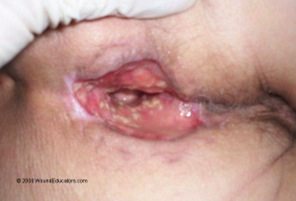Pressure Injury – Formerly Known As Pressure Ulcer
Pressure Ulcers are lesions caused by many factors such as unrelieved pressure; friction; humidity; shearing forces; temperature; age; continence and medication; to any part of the body, especially portions over bony or cartilaginous areas such as sacrum, elbows, knees, and ankles. Although often prevented and treatable if found early, they can be very difficult to prevent in frail elderly patients, wheelchair users (especially where spinal injury is involved) and terminally ill patients.
On April 13, 2016 the National Pressure Ulcer Advisory Panel (NPUAP) announced a change in terminology from pressure ulcer to pressure injury and updated the stages of pressure injury. (Read Press Release)
Use the external resources below to learn more about lower extremity wounds.
Pressure Injury Guidelines and Position Statements
- New!! NPUAP Pressure Injury Stages
- New!! NPUAP Pressure Staging Illustrations
- Newly Released!! NPUAP Pressure Injury Prevention Points
- Prevention and Treatment of Pressure Ulcers: Clinical Practice Guideline
- Complimentary Educational Webinars
- PUSH Tool
- Image Library
- NPUAP Position Statements
- Support Surfaces Terms and Definitions
Pressure Injury Articles
- Pressure Ulcers at End of Life: An Overview for Home Care and Hospice Clinicians
- From Pressure Ulcers to “Pressure Injury”
- Pressure ulcers get new terminology and staging definitions
- Practice Recommendations for Preventing Heel Pressure
Organizations and Resources
- National Pressure Ulcer Advisory Panel (NPUAP)
- European Pressure Ulcer Advisory Panel
- Agency for Health Care Research and Quality (AHRQ) (formerly AHCPR)
- National Guideline Clearinghouse
We are dedicated to providing accurate, up-to-date, and reliable information related to wound care management. Please report any broken links or other problems with this page to our customer support center.


Thank you for sharing those resources and promoting health and wellness. Many people suffer from pressure ulcers, especially those who are bedridden or disabled. I hope we can find more effective treatments for them.